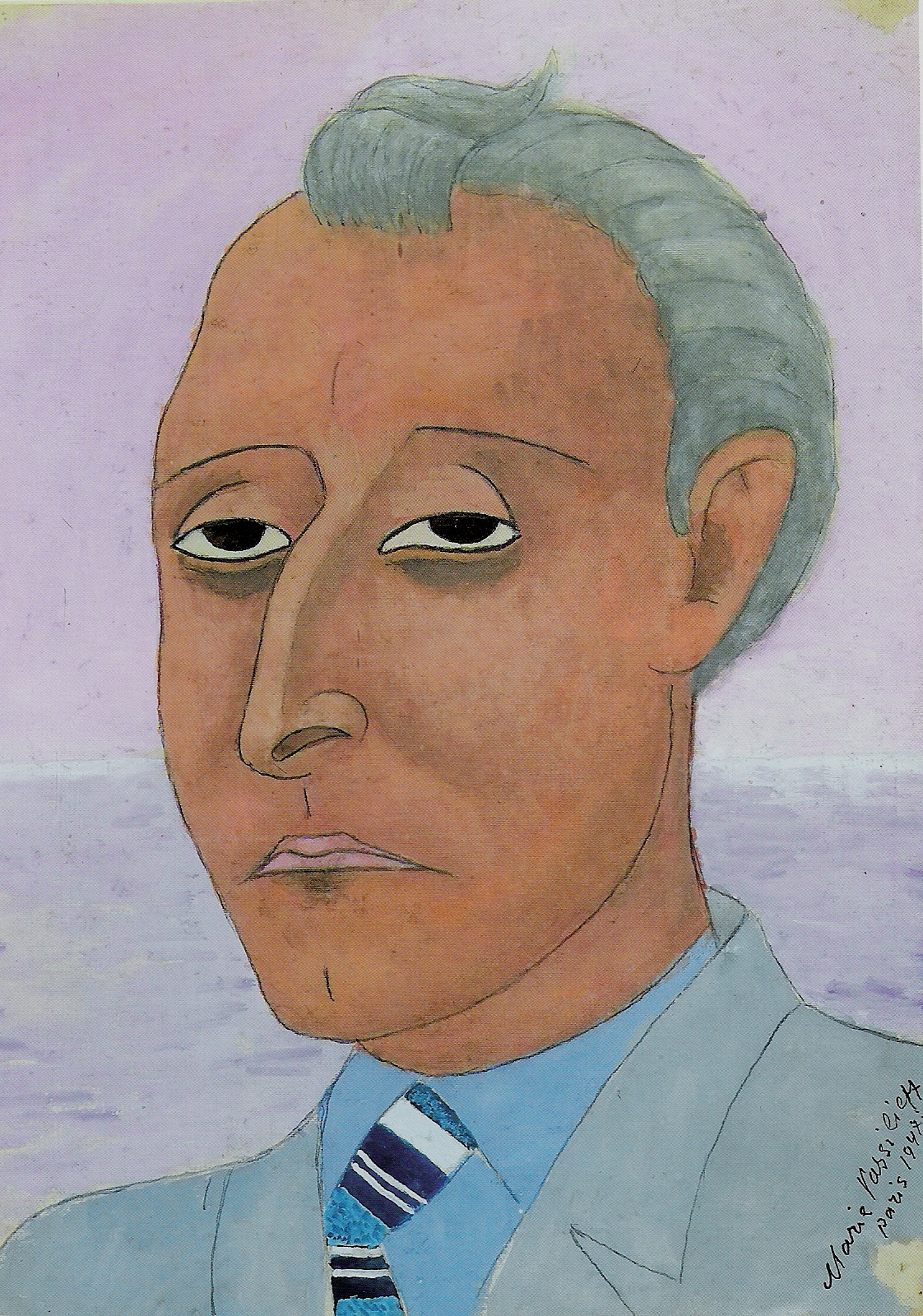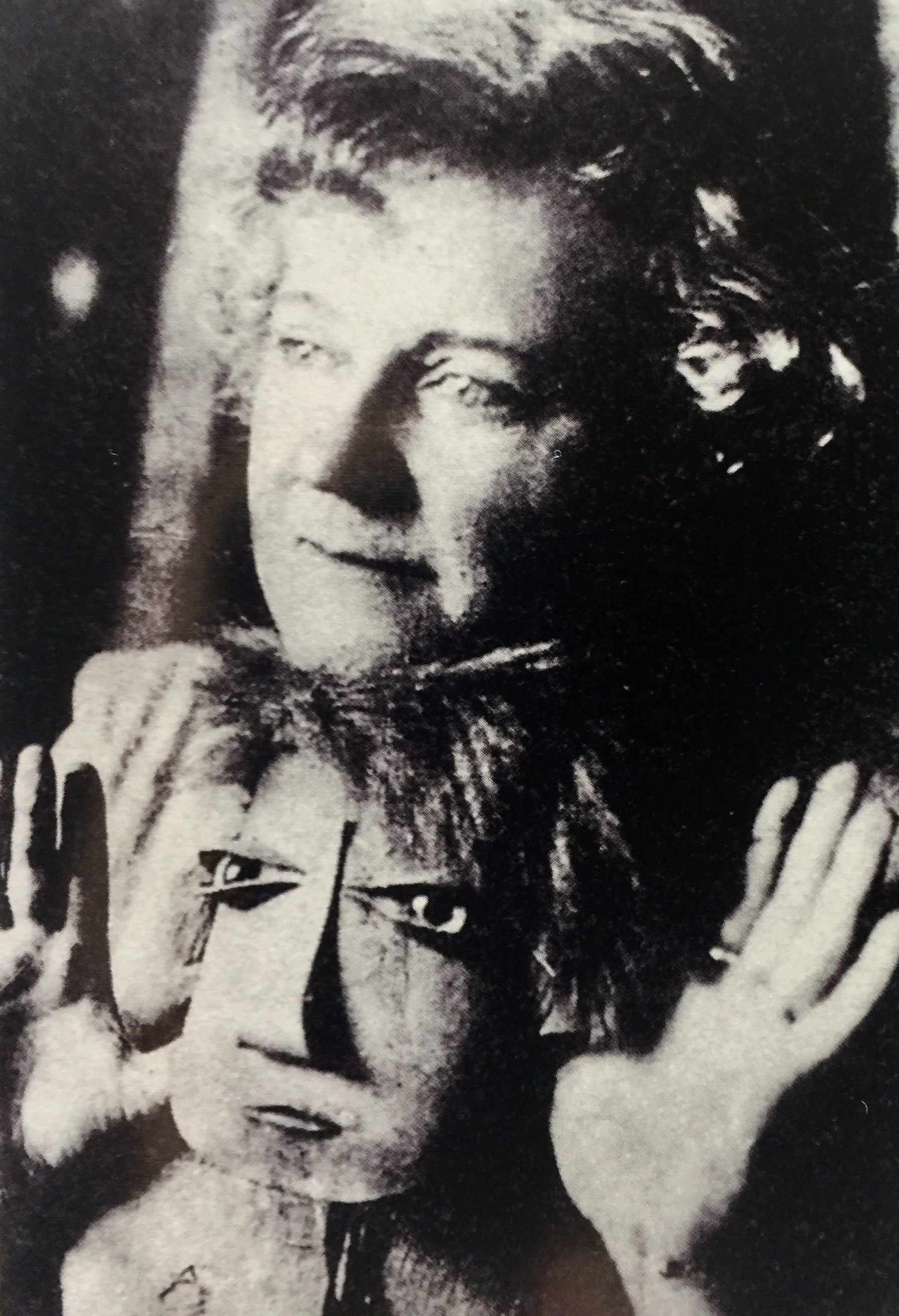Vassilieff Marie (1884 - 1957)
Marie Vassilieff
Mariya Ivanovna Vassiliéva, (February 12, 1884 – May 14, 1957), better known as Marie Vassilieff.
She moved from Russia to Paris at the age of twenty-three and became an integral part of the artistic community on its left bank called, Montparnasse.
She was born in Smolensk, Russia to a prosperous family who encouraged her to study medicine. Her natural instincts, however, were for the arts and, in 1903 she switched to the study of art at the Academy in St. Petersburg. 1905 she visited the artistic capital of the world, Paris, France.
Two years later, she moved to Paris, taking a job as a correspondent for several Russian newspapers while studying painting under Henri Matisse and attending classes at the Ecole des Beaux-Arts.
In 1908 she founded the Académie Russe (Russian Academy), which was renamed the following year as the Académie Vassilieff.
In 1912 she opened her own atelier in Montparnasse. It became the nexus for those at the cutting-edge of art at the time, when Erik Satie, Henri Matisse, Nina Hamnett, Amedeo Modigliani, Ossip Zadkine, Juan Gris, and Chaim Soutine started dropping by in the evenings for conversation and occasionally to draw.
Before long the walls of Marie Vassilieff’s atelier held a collection of paintings by Marc Chagall and Modigliani, drawings by Picasso and Fernand Leger, and in a corner, sat a sculpture by Zadkine.
By 1913, her studio was so widely known that Fernand Leger gave two lectures there on the topic of Modern art.What Marie Vassilieff is most remembered for, however, is her canteen that operated before and during World War I. She volunteered as a nurse in the French Red Cross and saw how badly the financial situation had become for many of the artists of Paris who were already struggling. Because many of her artist acquaintances frequently had little or nothing to eat, in 1915, she opened the canteen that provided a full meal and a glass of wine for only a few centimes.
While her canteen provided a valuable service, during the war it became a popular gathering place for the artistic community. During the war a government curfew was put into place. The restaurants and cafés of Paris all were obliged to close early, however, Marie Vassilieff’s canteen was licensed as a private club and, therefore, not subject to the curfew. As a result, soon her place became crowded and at night, filled with music and dancing.
In January of 1917, Georges Braque, who had been wounded fighting in World War I, was released from military service. Marie Vassilieff and Max Jacob decided to organize a dinner for Braque and his wife, Marcelle. Among the guests was Alfredo Pina with his new companion, Beatrice Hastings, who had recently ended her two-year relationship with Amedeo Modigliani. Knowing Modigliani’s penchant for causing a disturbance when he drank, and that he drank often, Marie Vassilieff did not invite Modigliani to Braque's party. The art community was small, however, and word of the get-together soon reached Modigliani. An uninvited, and very drunk, Modigliani showed up, looking for a fight. A scuffle ensued, a pistol appeared, and Marie Vassilieff, all five feet of her, pushed Modigliani downstairs while Pablo Picasso and Manuel Ortiz de Zarate locked the door. Marie Vassilieff made what is now a very famous drawing depicting the events of the evening.
Marie Vassilieff's own artwork is primarily in the Cubist style, her most interesting paintings are portraits of dancers as well as those of her friends, Jean Cocteau, Picasso, and Matisse. Known, too, for her decorative furniture pieces and her doll-portraits, Vassilieff’s works remain very popular. Although her works never gained the lofty stature or astounding prices of some of her renowned contemporaries, today they may be found in museums and private collections worldwide.
As both an artist and friend, Marie Vassilieff was an integral part of the great creative community of Montparnasse, where today one may still see her ornamental panels, created in 1927 for the pillars in the dining room of the La Coupole.
After several exhibitions in London in 1928 and 1930, and in Italy in 1929, she opened the Vassilieff Museum. Friends with Alfred Jarry, she organized a homage to him.
Marie Vassilieff died at a home for elderly artists in Nogent-sur-Marne, Île-de-France, France.
In 1998, the Musée du Montparnasse was opened in Marie Vassilieff’s old studio.
Васильева Мария Ивановна родилась в Смоленске в зажиточной семье землевладельцев. В 1905 году поехала учиться в Париж на стипендию вдовствующей императрицы Марии Федоровны.
С 1909 года выставляла живопись в Осеннем Салоне, Салоне Независимых.
В 1910 году стала одним из организаторов Русского литературно-художественного общества в Париже и старостой Русской Художественной Академии на авеню du Maine 21 . В начале 1912 основала в собственной мастерской “Свободную Академию” или “Академию Марии Васильевой”, которая была студией, действующей по принципу свободной работы без преподавания. В мастерской Васильевой на авеню дю Мэн в эпоху расцвета художественного Монпарнасса бывали Пикассо, Брак, Модильяни, Сутин, Цадкин, Макс Жакоб и Матисс, чьей ученицей была Васильева. Фернан Леже дважды выступал в Русской академии с докладами "о современном искусстве". Знаменитый русский коллекционер живописи Щукин начал покупать работы Матисса после того, как Васильева написала о нем статью в журнале "Золотое руно" (1906-09, Москва, изд. Рябушинского). Щукин заказал Матиссу несколько картин для своего московского дома, одна из них - "Танец"- находится сегодня в Эрмитаже.
Наибольшую известность сегодня имеют портреты, выполненные Марией Васильевой, в частности ее друзей художников и поэтов, Модильяни и Жана Кокто, - участников шумных вечеринок в ее студии 1910-20 гг.
Биографы Васильевой описывают живописные подробности этих вечеринок, собиравших весь цвет тогдашней парижской артистической жизни. В 1917 г. Мария и Макс Жакоб устраивают в мастерской Васильевой вечер в честь Жоржа Брака, который только что вернулся с войны (он получил ранение и был демобилизован). Модильяни, явившийся на вечер без приглашения, застал свою бывшую подругу писательницу Беатрис Хастингс (с которой он расстался в 1916 г) в компании с новым возлюбленным, Альфредо Пина. Модильяни (который, как известно, сильно пил) устроил ссору и Пина вытащил пистолет. Васильева тогда выставила Модильяни за дверь, но сцену - зарисовала. Остались и другие ее зарисовки вечеринок - менее драматических, собиравшихся в мастерской на авеню дю Мэн.
В начале Первой Мировой Войны записалась в Красный Крест и открыла рядом со своей мастерской благотворительную столовую для художников. В 1915 вернулась в Россию, где участвовала в авангардных выставках. В 1916 вернулась во Францию. Начала создавать гротескные куклы-портреты из папье-маше и показала их на специальной выставке, В 1920-28 исполняла театральные костюмы и маски для Шведского балета. В 1929 работала в театре марионеток “Радуга”. Провела несколько персональных выставок в магазине П. Пуаре “Martine” (1922), в своей мастерской (1924), в галлерее Зак (1928). Участвовалa в международной выставке декоративных искусств в Париже (1925), выставке “30 лет независимого искусства 1884-1914” в салоне Независимых (1926). Создала в своей мастерской “музей Марии Васильевой”, экспозицию которого составили картины, куклы-портреты, марионетки, маски, иконы и статуэтки
В 1937 году работала для театра Луизы Лара “Искусство и Действие”. В 1938 перехала в Кань-сюр-Mер, где оставалась до конца войны.
В 1946 вернулась в Париж. В 1946-57 участвовала в салоне Независимых. В 1949 была организована выставка “в честь М. Васильевой” в фойе столовой для художников, в 1955 ретроспективная выставка состоялась в галерее Haut-Pave.
Посмертные выставки прошли в Париже и Берлине. Сейчас в бывшей мастерской Марии Васильевой создан Музей Монпарнасса.

